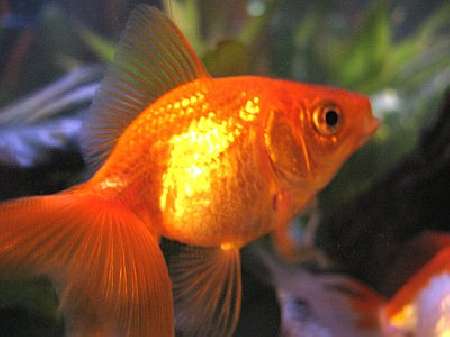Fish Can Also See  A Goldfish |
The researchers have discovered in fish a type of cell that can sense light and contribute to vision. Already three retinal cells have been discovered which helps to see images and distinguish between day and night.
A team of neuroscientists at Johns Hopkins School of Medicine have shown that retinal horizontal cells, which are nerve cells, were considered only to talk to neighbouring nerve cells and not even to the brain, are light sensitive themselves.
"This is mind-boggling," said King-Wai Yau, professor of neuroscience at Johns Hopkins.
"For more than 100 years, it's been known that rod cells and cone cells are responsible for sensing light, and therefore, vision," said Yau.
"Then, about seven years ago, another light sensor was discovered in the retina, revealing a third type of light-sensitive cells in mammals, so we set out to look at whether this was true in other vertebrates as well."
Focussing their efforts on the melanopsin light sensor, which is responsible for sensing day and night but barely involved in seeing images, at least in mammals, Yau's team looked for melanopsin-containing cells in other vertebrates, and found some in the retinal horizontal cells in goldfish and catfish.
Horizontal cells, said Yau, allow cross-talk between neighbouring photoreceptor cells, allowing these cells to compare the light they sense, a process necessary for the brain to see images.
"The brain processes what it sees in context to the surroundings," said Yau. "This allows our brain to see borders and contours. Horizontal cells are the reason why we can recognise and see a face, for example."
These findings were published in Nature.






